Sun Pharma’s Dilip Shanghvi beat in revenues, Mukesh Ambani is No 2 Richest Indian
Sun Pharmaceutical Industries Ltd founder Dilip S. Shanghvi on Wednesday overtook Reliance Industries Ltd’s Mukesh Ambani as India’s richest person, according to the Bloomberg Billionaires Index. Shanghvi has a net worth of $21.7 billion, while Ambani, who’s been India’s wealthiest man since the inception of the Bloomberg index in March 2012, has a $21.6 billion fortune. Shanghvi, a first generation entrepreneur, is also chairman and managing director of Sun Pharma Advanced Research Co Ltd, and chairman of the Shantilal Shanghvi Foundation. He holds a B.Com degree from Kolkata University.
Sun Pharma founder Dilip S. Shanghvi, a first generation entrepreneur, is also chairman and managing director of Sun Pharma Advanced Research Co Ltd, and chairman of the Shantilal Shanghvi Foundation.
The Bloomberg Billionaires Index is a daily ranking. The index is a dynamic measure of the world’s wealthy based on changes in markets, the economy and Bloomberg reporting. Stakes in publicly traded companies are valued using the share’s most recent closing price. Valuations are converted to US dollars at current exchange rates. “It comes as no surprise to see an enterprising Gujarati like Shanghvi top the charts. A self-made man, with high business acumen, vision, and an eye to spot a hidden gem or opportunity instantly,” said Amar Ambani, head of research at India Infoline Finance Ltd. According to Bloomberg, the majority of Shanghvi’s wealth comes from his 60.8% stake in Sun Pharma. He also owns shares of Sun Pharma Advanced Research Co., Natco Pharma Ltd and Bio Light Israeli Life Sciences Investments Ltd. In April, Shanghvi, 60, announced an all-stock deal to buy troubled Ranbaxy Laboratories Ltd, hoping to turn it around and bring it under Sun Pharma’s fold. The $3.2 billion deal with Daiichi Sankyo Co. Ltd is the second largest deal ever in the Indian pharmaceutical sector. The acquisition, which is expected to close by end of this financial year, will make Sun Pharma the largest Indian generic drug maker and the fifth biggest in the world. Shares of Sun Pharmaceutical have surged 75.25% this fiscal year against 4.58% decline in Reliance Industries while the benchmark Sensex index gained 31.24%. Before concluding the Ranbaxy deal, Sun Pharma had made 13 acquisitions between the late 1990s and 2012, starting with the purchase in 1997 of Detroit-based Caraco Pharmaceutical Laboratories Ltd. Not all of these were easy. In 2010, it acquired a 66% stake in Israel-based Taro Pharmaceutical Industries Ltd after a four-year legal battle with its founders—the Levitt family—in a move that more than doubled its revenue in the US to $1.1 billion from $484 million. It offered to buy the balance 34% stake as well, but decided to drop the plan when some hedge fund investors did not agree with the valuations. Most recently, on Tuesday, Sun Pharmaceutical, India’s largest drug maker, signed an agreement with GlaxoSmithKline Plc (GSK) to purchase its opiates business in Australia for an undisclosed amount. GSK Opiates, including related manufacturing sites in Latrobe (Tasmania) and Port Fairy (Victoria) and its portfolio products, along with inventory, will be transferred to a subsidiary of Sun Pharma Shanghvi’s personal investment vehicle Dilip Shanghvi Family and Associates (DSA) is also hitting the headlines for investing in select assets. Last month, Suzlon Energy Ltd, the world’s fifth largest wind turbine manufacturer, signed a definitive agreement with DSA for an equity investment of Rs.1,800 crore. Suzlon Energy, promoted by Tulsi Tanti, was scouting for a financial investor to help the company cut debt and expand the business. The Shanghvi family emerged as the white knight for Suzlon.
The change in India’s patents regime in 1970 to process patents gave rise to dozens of drug companies in the country, but few can match the pace of Sun Pharmaceutical Industries. From a start-up 30 years ago selling niche products, it is now India’s largest and most valuable drug maker and set to become the world’s fifth largest generic pharmaceuticals company after its acquisition of rivalRanbaxy Labs.
Sun Pharma’s rise can only be compared with technology companies, where winners tend to take all. A challenger till a decade ago, Sun Pharma is now more valuable than the combined market capitalisation of its next three competitors in India.
The man behind this success is Dilip S Shanghvi, Sun Pharma’s founder and managing director. Among the most low-profile pharma bosses in India, he founded Sun Pharma in 1983 with a two-man marketing team and a small manufacturing facility to make psychiatry drugs and capsules at Vapi, Gujarat. Since then it has been a story of small victories adding up to a big win.
In the 1980s and 1990s, when his bigger Indian rivals were taking on multinational drug makers in established categories with assistance from India’s new patents regime, Shanghvi focused his attention and meagre resources on creating a portfolio of niche generic drugs that were not a priority for others because of their low revenue potential. Shanghvi was not bothered about the immediate size of the market as his eyes were fixed on the fat margins these least contested categories provided and their long-term potential in a fast-growing economy like India.
Historically, anti-infectives’ (drugs used for treatment of infectious diseases) and gastrointestinal therapies have been the biggest revenue drivers for the Indian pharmaceuticals industry. But these categories are dominated by the Indian arms of multinationals which have been in the market for decades or old Indian drug makers such as Cipla and Ranbaxy. Besides, this market is dispersed nationally and success requires big upfront investment in marketing, sales and distribution.
Rather than fight domestic and foreign incumbents in the then large therapies, Sanghvi focussed on speciality and chronic therapies such as psychiatry, cardiovascular, neurology, oncology and dermatology.
The revenue opportunity was small to begin with, but less competition translated into higher margins that provided Sanghvi the resources to reinvest in the business. Sun Pharma began to attain volume and value leadership in many of these therapies. As urbanisation grew lifestyle ailments became more prominent, allowing Sun Pharma to grow faster. In contrast, the incidence of infectious diseases declined with improvement in hygiene and standards of living.
Shanghvi was also one the first drug bosses to see through the maze of complexity in India’s patent regulations, product approvals, price controls and compulsory licensing. He chose instead to focus on patients and doctors in the same manner a consumer goods company would do. This meant focusing on brands, pricing strategy, and a sales and distribution network.
This winning formula shows in Sun Pharma’s numbers. In the past three years, Sun Pharma has earned an operating profit of Rs 45 for every Rs 100 of revenue. This is much higher than what peers like GSK Pharma (Rs 34.3), Dr Reddy’s Lab (Rs 24.5) and Cipla (Rs 26) earn from their operations.
Sanghvi used Sun Pharma’s superior profitability to crank up the growth engine through strategic acquisitions, first in India and then in the US, the world’s largest market for generic drugs. This enabled him to scale up fast and plug gaps in his arsenal: be it products, brands, manufacturing footprint or market reach. Starting in 1996, when it acquired the bulk drug plant of Knoll Pharma, Sun Pharma completed 17 acquisitions besides a joint venture with MSD, one the world’s top pharmaceuticals companies, for product marketing in emerging markets. And now it is close to acquiring Ranbaxy in the largest drug industry deal in India.
Among his peers, Shanghvi is most open to using mergers and acquisitions (M&A) to grow faster, but he has always been conscious of Sun Pharma’s bite size and the price of the acquired asset. Intangibles such as goodwill and patents that are created while accounting for M&As in the balance sheet, make up for only 36 per cent of Sun Pharma’s gross block, against 46 per cent for Dr Reddy’s Labs, which has a similar growth strategy. The financial conservatism is visible in the Ranbaxy acquisition as well. The all-stock deal will double Sun Pharma’s revenues at a cost of eight per cent dilution in equity and earning per share. This will be more than taken care off by savings that will accrue by eliminating duplication within the combined entity.
Sanghvi was also quick to understand the business implications of rising life expectancy, especially in North America and Europe, the world’s two biggest drug markets. People are not only living longer than their parents but they are also taking more pills for longer, especially for lifestyle ailments. With the cost of medicines threatening to go through the roof, an increasing number of doctors, patients and governments (where health care is universal and publicly funded) prefer generics over expensive patented drugs. Sun Pharma logged into this opportunity through a series of strategic acquisitions and investment in branding, marketing and sales, and distribution in all key markets across the globe.
Going forward, the biggest challenge for Sun Pharma will be to protect its newfound leadership without diluting its value and profit leadership in the industry. It will not be easy. So far in his career, Shanghvi was a challenger trying to make space in an industry dominated by larger and well-established incumbents. Now Sun Pharma has become an incumbent with about nine per cent market share in India after its merger with Ranbaxy.
Bigger market share has also translated into greater regulatory scrutiny of Sun Pharma’s manufacturing and marketing practices. Recently, the company received a warning from the US Food and Drug Administration over its manufacturing practices. Sun Pharma is also under investigation by the US Congress over allegations of overcharging. The US accounts for nearly three-fourths of Sun Pharma’s consolidated revenue. The immediate task for Shanghvi will be to turn around the operations of Ranbaxy and restore the US regulators’ confidence in his processes and products.
Pharmanewsprwire is the most credible destination of pharmaceutical news disseminated to more than 1000 Press Agencies in the world. Pharmanewsprwire is a division of illustrious Network 7 Media Group




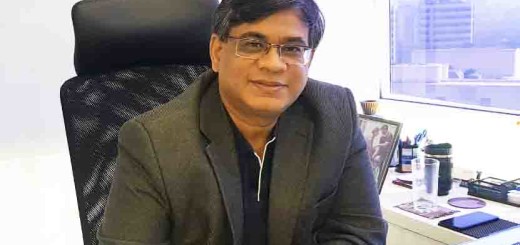





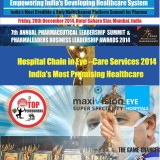
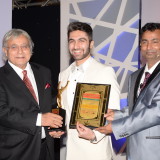
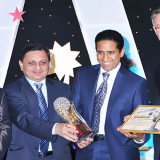
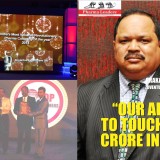

Recent Comments